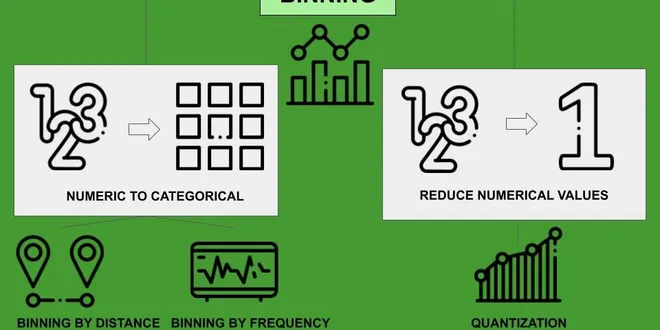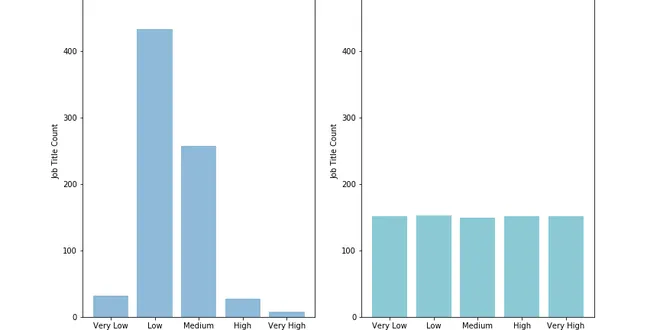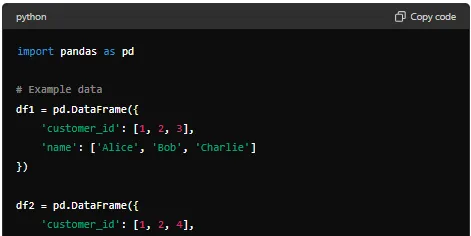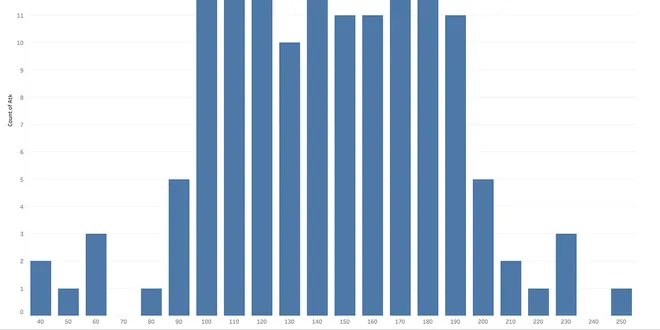Data Science & Developer Roadmaps with Chat & Free Learning Resources
data-binning
Data binning, also known as bucketing, is a data preprocessing technique used to group continuous data into discrete intervals or “bins.” This process simplifies the data by replacing individual values within a small range with a single representative value, which can enhance the accuracy of predictive models. Binning is particularly useful in machine learning for discretizing continuous variables, making it easier to analyze trends and patterns. It can also aid in reducing noise in the data, thereby improving the overall quality of the analysis. Techniques such as binning by distance and binning by frequency are commonly employed in this process.

Data Preprocessing with Python Pandas — Part 5 Binning
Data binning (or bucketing) groups data in bins (or buckets), in the sense that it replaces values contained into a small interval with a single representative value for that interval. Sometimes…
📚 Read more at Towards Data Science🔎 Find similar documents

Spatial Binning with Google BigQuery
Data binning is a useful common practice in Data Science and Data Analysis in several ways: discretization of a continuous variable in Machine Learning or simply making a histogram for ease of…
📚 Read more at Towards Data Science🔎 Find similar documents

Data Binning with Pandas Cut or Qcut Method
Binning the data can be a very useful strategy while dealing with numeric data to understand certain trends. Sometimes, we may need an age range, not the exact age, a profit margin not profit, a…
📚 Read more at Towards Data Science🔎 Find similar documents

Binning Records on a Continuous Variable with Pandas Cut and QCut
Today, I’ll be using the “City of Seattle Wages: Comparison by Gender –Wage Progression Job Titles” data set to explore binning — aka grouping records — along a single numeric variable. Find the data…...
📚 Read more at Towards Data Science🔎 Find similar documents

Is Binning in Data Analysis a Good Idea?
Data analysis is a very important part of the data scientist’s job. Because I am not actually employed by a company as a data scientist, I must acquire my skills by taking courses or entering…
📚 Read more at Python in Plain English🔎 Find similar documents

All Pandas qcut() you should know for binning numerical data based on sample quantiles
Numerical data is common in data analysis. Often you have numerical data that is continuous, very large scales, or highly skewed. Sometimes, it can be easier to bin those data into discrete…
📚 Read more at Towards Data Science🔎 Find similar documents

A Beginner’s Guide to Converting Numerical Data to Categorical: Binning and Binarization
That’s exactly what converting numerical data into categorical data can do for you! In today’s post, we’ll dive into two game-changing techniques: Binning and Binarization , perfect for scenarios like...
📚 Read more at Towards AI🔎 Find similar documents

The Role of Data Blending and Data Munging in the Data Science Process
Data science is a multidisciplinary field that utilizes scientific methods, processes, algorithms, and systems to extract knowledge and insights from structured and unstructured data. The lifecycle of...
📚 Read more at Python in Plain English🔎 Find similar documents

Data Scientists: STOP Randomly Binning Histograms
Histograms are a crucial part of Exploratory Data Analysis. But we often abuse them by randomly choosing a number of bins. Let’s use math.
📚 Read more at Analytics Vidhya🔎 Find similar documents

Databaiting
Databaiting: to entice someone to submit their data by eliciting an emotional response. Is it a useful description?
📚 Read more at Towards Data Science🔎 Find similar documents

Group data using bins and categories with pandas
Today I’d like to show you how to bin discrete (integer) and continuous (float) data with custom intervals in pandas. Added to that, I will also show you how panda’s Categoricals can handle…
📚 Read more at Level Up Coding🔎 Find similar documents

Data Mining
Data mining is the process of applying algorithms to search for patterns within collections of data. Fundamentally, data mining is the deployment of an automated process for analyzing large amounts of...
📚 Read more at Codecademy🔎 Find similar documents

